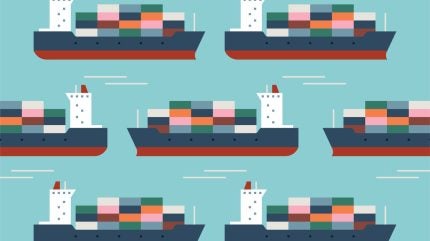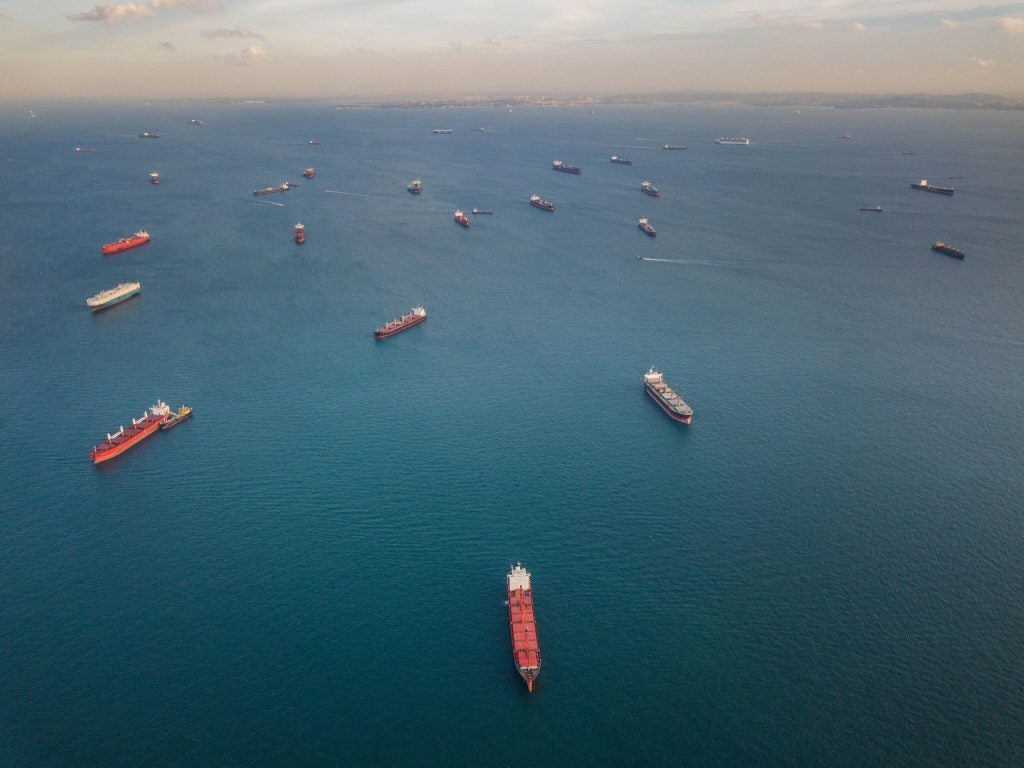
Port congestion has continued to make headlines this year, with Asian ports and key transhipment hubs, including Singapore and Colombo, reaching critical levels.
Singapore has been hit by the worst congestion since the pandemic due to a rerouting of maritime traffic in the Red Sea to avoid Houthi attacks off the coast of Yemen. Colombo has also seen an unusual surge in volume, exacerbated by vessel diversions linked to the Red Sea disruptions, with “some ships languishing for over five days before securing a berth”, according to Anne-Sophie Fribourg, VP of digital freight forwarding company ZenCargo.
These issues have added pressure to main trade lanes and are impacting secondary ports in countries such as India and Bangladesh, but there are other crucial stretches of water that could further impact congestion in the region.
Frank Kenny, a former Gartner analyst and current director of industry strategy at tech company Cleo, points to the fact that the Strait of Malacca is increasingly susceptible to military conflict, potential piracy, and the effects of climate change.
“The narrow strait, located between East Asia, the Middle East, and Europe, is a critical chokepoint that accounts for about 30% of global trade, including roughly 80% of China’s energy imports,” he notes, adding that “a disruption here would be catastrophic for the global supply chain.”
Port congestion issues aren’t just restricted to Asia. Ports on the US West Coast have also experienced bouts of congestion over recent years. This is cause for concern when 40% of containers from Asia come through California’s San Pedro Bay complex, which handles more containers per ship call than any other port complex in the world.
The cause of port congestion
According to Drewry Maritime Research’s July 2024 Ports & Terminals Insight, pre-berth waiting times globally are much lower than the Covid-19-related peak in 2021 and 2022.
Still, they are high compared with pre-pandemic levels and have been steadily growing this year. It reports waiting times rising 14% month on month in June; 42% higher than at the beginning of the year.
Clearly, one of the biggest causes of the current congestion is rerouting due to attacks in the Red Sea, but other issues have also played a part.
The underinvestment in labour and infrastructure is now making itself seen clearly.
Climate change has made the weather extreme and unpredictable, causing logistical challenges. For example, dropping water levels in the Panama Canal this year, caused by a drought, led the authority to bring in restrictions to ship crossings, forcing re-routes.
Infrastructure is also having an impact, with insufficient on-shore warehousing and struggling distribution centres, as well as a shortage of workers; who in recent years have had to deal with constant change.
“The underinvestment in labour and infrastructure is now making itself seen clearly, from the looming threat of an International Longshoremen’s Association (ILA) strike on the US East Coast to space issues in transhipment ports that can spread quickly,” says Fribourg.
The impact of port congestion
Port congestion has a negative ripple effect across the entire supply chain. As Margaret Kidd, programme director and instructional associate professor of supply chain and logistics, at the University of Houston puts it, it’s a “negative trifecta” in that carriers, shippers, and ultimately consumers will pay more.
“Simply put, a supply and demand imbalance is triggering higher rates and delayed receipt of goods,” she says. This is because congestion causes delays that cost shipping lines and businesses money.
Ultimately, severe congestion can slow down economic activity.
Reduced tonnage capacity on some trades due to port congestion may force shipping lines to declare blank sailings, resulting in lost earnings, which also increases costs throughout the supply chain.
“Delays in imports and exports can affect trade balances and economic stability. Ultimately, severe congestion can slow down economic activity, impacting overall GDP growth,” Fribourg says.
She also points to the impact on the environment, stating that congestion forces shipping lines to potentially take longer alternative routes, causing increased CO2 emissions due to additional fuel being burned.
Reducing congestion
Work continues in earnest to find new ways to ease port congestion. There have been several great examples of port ecosystems that have managed to bring down congestion by adjusting their processes.
“Examples of this are the implementation of more advanced systems or working from a just-in-time port call principle, which creates an environment where data is shared in a timely manner and that makes it actionable,” notes Kristina Jumelet, product owner, schedule and operations, at the Digital Container Shipping Association (DCSA).
In addition, the industry has certainly seen an increase in attention from technology providers looking to offer solutions to the port congestion problem, and as technology and connectivity continue to advance, data connection and analysis will also play an increasingly important role in reducing congestion.
“At the margin, technology could help,” says Ira Breskin, a senior lecturer at SUNY Maritime College and author of The Business of Shipping. “There’s software that can calculate, in real-time, optimal sailing speed for ships underway or prompt requested delayed arrival to reduce congestion.”
An issue to overcome here, however, is that some in the industry feel threatened by the speed of technological change. For example, Kidd states that the ILA is opposed to automation at US ports.

Embracing technology that can ease some of the congestion will involve time and change management, but there’s also another issue to overcome when it comes to the implementation of potential tech solutions.
This is because many of the systems on offer today focus on creating visibility and increasing optimisation from the perspective of a single party. Experts agree that this is an issue because of the high level of co-dependency between the different actors.
“They must come together to align on terminology, communication protocol, and underlying processes in order to properly mitigate port congestion,” says Jumelet.
“In essence, it’s all about the right party receiving – and being able to act upon – accurate, complete, good quality data in a timely manner. Therefore, resolving port congestion will require a joint effort from many different actors.”
This article was originally published in our digital magazine, Ship Technology Global. You can subscribe to the magazine for free by clicking here.



